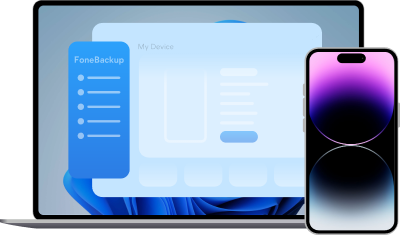[Solved] Can't Add Email Account to iPhone/iPad
What to do if you can’t add Email account, like iCloud, Yahoo, BT, outlook, Gmail, to iPhone/iPad, read this post for some troubleshooting guides.
Email supports you to send and receive free files quickly and easily, whether, on mobile or desktop, it is a secure tool that allows you to set passwords, and emails can easily be backed up and stored separately without taking up physical space.
But sometimes, you may encounter the problem of "cannot add email account to iPhone/iPad/Apple ID " when logging into iCloud, Yahoo, BT, Outlook, and Gmail accounts on iPhone/iPad.
Why can't add Email account to iPhone/iPad?
There are some reasons for "unable to add email account to iPhone/iPad".
- No Wi-Fi or cellular data connection: A good internet connection is a prerequisite for setting up an email account.
- Outdated iOS version: Unable to add email account to iPhone due to lack of iOS update.
- Certain email accounts server problems: Certain email accounts like POP, IMAP, and Exchange may require additional information like server names and server port numbers.
- Note:✎
- If the email account is used for work, school, or another organization, there might be a profile installed preventing the account from being added, please contact them for assistance.
Five solutions to fix cannot add Email account to iPhone/iPad
Please make sure you have a good internet connection on your iPhone or iPad before starting solve the problem.
Solution 1. Update iOS version and restart your iPhone/iPad
As we said before, an outdated iOS version may not support adding new email on iPhone/iPad. So the first thing you need to do is to update your iOS to the latest version.
Go to Settings> tap General>tap Software Update and see if a new version of iOS is available. After the update, you can restart your device to try again.
Solution 2. Check if IMAP/ POP is enabled
If you can’t add a Gmail account to iPhone/iPad, it is necessary to check if IMAP is available. Sometimes it turns off by default after restarting the iPhone or updating iOS.
1. Go to mail.google.com site using your web browser.
2. Log into your Gmail account.
3. Go to Gmail Settings, select Forwarding and POP/IMAP, tap the Enable IMAP.
Solution 3. Select a valid Email account type
There are many Email types of iPhone/iPad to log in, like iCloud, Exchange, Google, Yahoo, Aol, Outlook mentioned above. When you can't add email account to iPhone/iPad, you should check if your account is valid and if not, try to change another email account.
Solution 4. Re-attempt to set up Email account manually
If you failed to set up your email account through automatic mail account setup and you cannot add the email account to iPhone/iPad, you can retry manually setting up your email account to add it.
Step 1. Go to Settings, click Passwords & Accounts, tap Add Account.
Step 2. Select your email provider from the list.
Step 3. On the next screen, enter necessary details including Name, Password or other relevant information, then click Next to continue.
Step 4. Choose the types of content to sync, then click Save.
Solution 5. Reset all settings on your iPhone/iPad
If you're still having issues, you can try resetting all settings on your iPhone/iPad. This will remove all custom settings from your device, including those that might conflict with the Mail app account setup process, to help you successfully add new email account.
Warning: Although resetting all settings only remove settings, and won't delete iPhone/iPad data, it is recommended that you make a full backup of ahead of time just in case of data loss.
Step 1. Tap on the Settings on your iPhone/iPad, click General.
Step 2. Tap Reset and click the Reset All Settings option. If asked, enter your device passcode.
After reset, go to add email account and try again.
Conclusion
Here are five solutions for you when you can't add email account to iPhone/iPad. Hope you can use one of them to solve this problem. It is strongly recommended to backup your iPhone before this to protect the data, especially using the last method.

